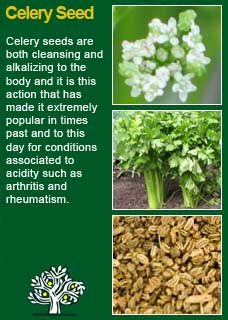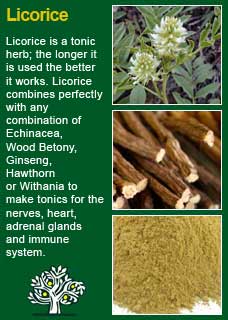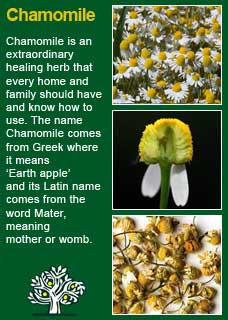
|
|
||||
| Our Pages ABOUT CONSTITUTIONAL MEDICINE
|
It is the bark of the Willow that has been historically used in herbal medicine. Willow is of course the well-known tree found in many parks and gardens. Willow’s graceful drooping branches give it a sweetly melancholic appearance; ‘the Weeping Willows’.
Willow branches are more pliable and less likely to split than most types of wood and so it has been used since the earliest civilisations for making baskets, fish traps, items of wicker and even the framing of homes. It is certain that Willow bark and leaves were also widely used as a natural anti-inflammatory treatment for many thousands of years throughout our history. White Willow grew on the banks of the river Nile and the ancient Egyptians saw the weeping Willow as a symbol of joy! The 110 pages of the Ebers Papyrus, dated to 1534 BC lists over 700 herbal remedies with one of the most important plant species being tjeret or salix, known today as Willow. The Ebers papyrus describes the use of Willow as a general-purpose tonic and as an anti-inflammatory pain reliever for aches and pains. The Physicians in ancient China used White Willow bark to relieve pain and the ancient Greek physician Dioscorides wrote of its power to ease inflammation. TJ Lyle writes 'the bark of White Willow is an intensely bitter, stimulating, tonic nervine slightly astringent. As an antiperiodic (preventing regular recurrence of the symptoms of a disease, as in malaria) it is superior to quinine, and is much less exciting to the nerve centres. In decoction it is useful in general debility, chronic diarrhoea, chronic dysentery, convalescence from fevers, and in hot infusion stimulates the circulation. Salacin is an excellent tonic, nervine and antiperiodic. It relieves neuralgia and tones in convalescence. A small portion of Capsicum may be added when desired. It may be used for afterbirth pains and rheumatism' King's Dispensatory writes 'Willow bark is tonic, antiperiodic, and an astringent bitter. It has been given in intermittent dyspepsia, connected with debility of the digestive organs, passive haemorrhages, chronic mucous discharges, in convalescence from acute diseases, and in worms. In chronic diarrhoea and dysentery, the tonic and astringent combination of the willow renders it very eligible. It may be given in substance, in doses of 1 drachm of the powder, repeated as indicated. The decoction has also proved efficient as a local application to foul and indolent ulcers' The British Herbal Pharmacopoeia (BHP) describes the actions of Willow bark as 'anti-inflammatory, antirheumatic, antipyretic (fever reducing), analgesic, antiseptic & astringent'. It says it is indicated for 'muscular and synovial joint rheumatism with inflammation and pain. Influenza and respiratory catarrh. Gouty arthritis. Ankylosing spondylitis' and specifically indicated for 'rheumatoid arthritis and other systemic connective tissue disorders characterised by inflammatory changes. The BHP recommends a dose of 1-3 grams or by decoction or 1-3mls of the liquid extract. Thomas Bartram writes that the actions of Willow bark include 'antirheumatic, antiseptic, mild pain-killer, antipyretic with power to arrest inflammatory processes and reduce fever'. He suggests uses for it including 'inflammatory rheumatic states, painful muscles and joints, gout, fevers associated with rheumatism and gout, collagen disorders, rheumatoid arthritis, rheumatic fever, lumbago, sciatica, neuralgia, ankylosing spondylitis, skeletal backache, diarrhoea, dysentery. Deaths from heart-attacks may be reduced by treating patients with Willow bark together with clot-dissolving remedies' (e.g. Lime flowers or Ginkgo) Bartram recommends a decoction from half a tsp (about 1 gram) of dried bark to each cup of water, gently simmered for 1 minute, then infuse for 15 minutes, dose half to one cup, or 1-2 mls of the liquid extract, or as a powder 'chiefly in combination with other agents' Pain and inflammation are reliably reduced if sufficient amounts of Willow are taken so it was the subject of early scientific enquiry. In 1828 the French chemist Henri Leroux was the first to isolate one of the ingredients in Willow that was able to treat pain and inflammation; salicin. A small amount of it was as effective as a much larger dose of the crude herb but it could cause such discomfort to the stomach that it wasn’t for another 70 years when the German chemist Felix Hoffmann developed salicin into the much more digestible acetylsalicylic acid that the drug started to achieve the fame that it continues to enjoy to this day. Hoffmann’s employer; the now-giant pharmaceutical company Bayer, called this new substance aspirin.
~ There is a great deal more to Willow Bark than just the chemicals in it that act as the precursors to aspirin. Modern studies have led to some intriguing insights into Willow that suggest that it is constituents such as its flavonoids and polyphenols that are at least as much of the reason for why it can be so helpful for painful mobility disorders such as back pain and arthritis. ~ Traditionally, willow bark has been used as an analgesic, and many clinicians have evaluated the effectiveness of white willow bark in the treatment of chronic lower back pain of unknown origin. Willow bark has been compared to placebo and to cyclooxygenase-2 inhibitors, and many of the studies found willow bark to be as effective or superior to other methods (Chrubasik S, Eisenberg E, Balan E, et al. Treatment of low back pain exacerbations with willow bark extract: a randomized double-blind study. Am J Med 2000;109:9-14) (Chrubasik S, Kunzel O, Model A, et al. Treatment of low back pain with a herbal or synthetic anti-rheumatic: a randomized controlled study. Willow bark extract for low back pain. Rheumatology (Oxford) 2001;40:1388-93) ~ Willow bark is a traditional analgesic therapy for osteoarthritis. The benefits of willow bark extract on patients that suffer from osteoarthritis have been studied in several trials. All treatment groups were compared to placebo to establish effectiveness. All studies showed a significant difference between willow bark extract and placebo in the treatment of chronic pain (Schmid B, Ludtke R, Selbmann HK, et al. Efficacy and tolerability of a standardized willow bark extract in patients with osteoarthritis: randomized placebo-controlled, double blind clinical trial. Phytother Res 2001;15:344-50) (Mills SY, Jacoby RK, Chacksfield M, Willoughby M. Effect of a proprietary herbal medicine on the relief of chronic arthritic pain: a double-blind study. Br J Rheumatol 1996;35:874-8) ~ The authors, titles and the 'where-and-when' published of nearly 80 further studies and articles on Willow are listed in a PDF found here
That said Willow bark should be avoided whilst breast-feeding so as not to pass extra salicylates on to an infant who may then go on to develop a sensitivity to them. There are no known issues with using Willow in pregnancy and in most cases it will be tolerated fine by the young or old.
For some years now, against this proven and safe way of herbalism, there has been a rising tide of excessive caution and scare-mongering in many parts of the world. The same authorities that, not so long ago, decried herbal medicines as ineffectual, have now taken up a different adversarial position; that they are dangerous substances that should only be prescribed by Doctors, who of course have zero training in them. Unfortunately, the same unnecessary fear and worry has crept into many natural health websites and popular publications on herbs. Herbs that we have safely used for thousands of years, that have no reports of adverse reactions in the medical literature despite widespread use by millions of people, are suddenly described as contraindicated because of something that should have been seen as completely unimportant, or at the utmost a merely theoretical concern, such as a laboratory study on one of the herb's constituents to use an all too common example. I wonder sometimes if the writers of such articles feel that the herb will be more deserving of respect if it is thought to be a little bit dangerous, in other words more like a drug than something that has simply come out of the earth and been used by ordinary people for generations beyond count. There is just so much misinformation about herbal medicine on the internet now. Ludicrous claims and cautions abound in equal measure; it seems like one group are trying to make money out of the public whilst the other are busily trying to scare them off. I have to believe that the kind of reader who takes the time to read pages on herbs that are as extensive as this one is much less likely to be swayed by marketers or misinformers. I hope that you will keep your wits about you if you get conflicting opinions from people who have never really got to know these herbs, who have never worked with them, or learned how to use them safely and effectively. I want to remind you that the reason that herbs can never be patented and owned by any individual or corporation is because they are, and always will be, the People's medicine. They belong to all of us and it is my great hope in sharing this work that you will learn how to use them wisely for yourself, and the people you care for. Be safe, but do not be afraid.
Being as I am, a peace-loving, tree-hugging herbalist, I can say with certainty that Willow was my first love of Nature. The first tree whose branches I climbed as a young boy, to find my favourite perch, to feel big, connected, alive. I was too young to understand my parent's reasons to cut it down, what did 'more light' matter to me when I had lost my friend. I wept when i saw its ruined body and I have to believe that those tears were a part of what watered what grew through all those years that followed. These days, nearly every day, I walk through the morning traffic, cross two rivers of rushing metal cars to reach the looping river of water, the Avon, where, right at the entrance, stands a magnificent White Willow. It's trailing branches are my morning comb, they brush my face without scratching, and then I get to miss them for a while too, until I see the early green leaves of Spring begin to unfurl, and my heart soars to see my friend waking up again. Willow bark can be tough to take as a tea unless a quite moderate amount is used as the starting material. The recipe as suggested above by Thomas Bartram whereby just 1 gram is briefly simmered and then the liquid allowed to steep for a good quarter of an hour makes a rich coloured brew that is quite manageable to drink. However, at higher doses the tea will become increasingly bitter and astringent and, with a massive 13% content of tannins, will eventually become unpalatable if it is made too strong. Still, in the olden days, if you had a choice between hideous pain or drinking the tea I doubt it was difficult for anyone to make up their mind. Where a very strong tea of Willow bark may be of great help is when it needs to be used as an external treatment for things such as ulcers, burns, fungal infections or tonsillitis. See the 'Willow Bark Wash' below for more details on the recipe for this. I have in the past used a great deal of Willow Bark in a tincture form, whereby I felt that a good 1-2 mls at a time was probably at least as much as was needed to get a sure effect. Some people are more sensitive and need smaller doses, 1 ml or 20 drops could be enough, but for most people I would give 2 mls at a time, usually combined with other herbs as well. In any case, I would not go over 3 mls or 60 drops in a single dose. These days, my own personal prescribing of Willow Bark internally is nearly always as a concentrated powder that I give to people combined with a Turmeric concentrate in capsule form. I will gladly use quite high doses of these two herbs in combination when needed and they have given great benefit to many people in easing pain and suffering. Willow bark achieves its best effects when used patiently over a few days, here you can see a lasting benefit in the way it helps the body to move through a healing process. The proof of this is when the pain or inflammation resolves and does not come back when you stop using the herbs. Willow bark combines perfectly with Turmeric. It may also be used with much benefit alongside such herbs as Black Cohosh, Celery Seed, Licorice root, Chamomile or Peppermint.
~ For Sore Gums: Soak 1 or 2 cotton balls in the tea and rub gums with them several times a day. ~ For tonsillitis: Gargle with the cold tea as frequently as required to obtain relief. ~ For Athlete's foot or sweaty feet: Soak the feet in the cool tea for 15 minutes as often as required.
Much of the information here about the traditional uses of Willow is consistent with the model of thinking whereby one may treat problem A with herb B. There is value in this approach in how it helps us pass on useful knowledge to one another but where it falls short is that people are not all cut from the same cloth! Willow might work brilliantly for one person but less well for another with the same sort of symptoms -- why is this? Part of the reason is that people vary in their constitutions as to whether they are either hotter or cooler and, at the same time, either dryer or damper. This useful and rather fascinating subject is introduced further here Another big part of using the right herb when it is most needed comes from understanding the need to treat what is going wrong for the person that had led up to their getting a health condition. In this light, Willow can particularly offer its benefits when a cleansing action is needed in the 'cycle of healing' - more about that here
Please understand that I cannot advise you, including on products or dosage, without seeing you in person in my clinic but for ideas
on how you might find a good herbalist in your area read here |
|
|
|
© 2011 R.J.Whelan Ltd














